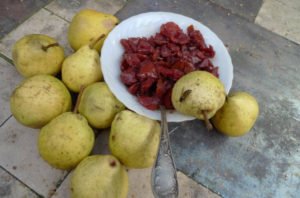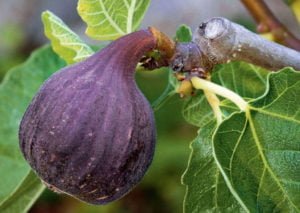
Mountain ash is very beautiful both during flowering and with clusters matured on the branches. Berries on the tree last a long time, are not afraid of frosts, are delicious in the form of juices, jellies, jams, jams, pastilles or simply grated with sugar. On their basis, you can even prepare a home medicine. Therefore, many gardeners are interested in having at least one rowan tree on their plot.
Planting and cultivation of Sorbus aucuparia.
You can grow sorbus aucuparia on the most common soil, but light trees will grow worse and produce less yield than they could. The most correct thing is to plant a sorbus in the fall. A 60×60 cm (2×2 feet) planting pit is filled with sterile soil, about 5 kg (11 lb) of meat or humus, 100 g (3.5 oz) of potash fertilizer and 200 g (7 oz) of superphosphate are added to it.
Getting a seedling is easiest and fastest by layering, grafting, seeds, and root offspring.

You can grow sorbus from freshly picked berries that are picked when they start to ripen. They need to be freed from the pulp. Before the autumn sowing, the seeds should be kept in a moist state. In the soil, make shallow groves, fill them with humus, deepening them by one and a half centimeters. Land in a well-lit area. When the seedlings grow, transplant them to a permanent place. In the process of care, form a trunk up to 80 cm (2.6 feet) high and make a couple of incisions in the upper part, from which you will form a crown. According to the technique, the grafting of sorbus is done in the same way as the apple.
Care of the sorbus, the formation of the crown and trim.
After that, all the care is reduced to the time of weeding, removing the rootstock, fertilizing, watering and loosening the soil. The circle of the shaft would also be nice to mulch (cover with straw, needles, dry grass). Before the beginning of fruiting, a puddle should form in the circle of the tree trunk from watering-this is the advice of experienced gardeners.
Cuttings are made if the mother tree has a low-octane shape, which will allow you to easily bend the branches to the ground.
In grafted plants, the fruits will appear within 2-4 years. It is advisable to plant or graft a couple of varieties at least for cross-pollination.
Pruning is done to evenly illuminate the tree, therefore, for a larger crop. Since the rowan crown is pyramidal, and the branches from the trunk depart at an acute angle – this is bad for their strength. Therefore, when forming the main skeletal branches, try to bring them at an obtuse or right angle.
Pruning is carried out in early spring, before the buds swell. In young trees, the shoots are slightly shortened on the outer bud, remove the shoots that depart at an acute angle, and excess ones. In the varieties that bear fruit on last year’s increments, the branches have thinned and slightly shortened. If the growth is weak, a rejuvenating pruning on two-or five-year-old wood will help. The rowan tree, to which several varieties are grafted, has semi-skeletal cut branches and in the most productive years the kolchado is thinned (most of the twigs). Sorbus shoots grow quite quickly, and in winter almost all ripen.
Varieties sorbus
Sorbus has many varieties, but at home, smooth-fruited species are more interesting for growing:
Sorbus domestica is very common throughout Central Asia, growing in the Crimea. It has a very large green size with plum fruits. The tree is very tall-almost 15 m (16.4 yard) in height.

The Ruby variety. It is obtained by pollination with pollen of ash pears of different varieties. The fruits are sweet and sour faceted, dark red.
Harvest

Sorbus berries on the branches are preserved for a long time. It is better to harvest bitter varieties after the first frost, so that the astringency disappears. Berries of sweet varieties are removed immediately after ripening, so that they are not pecked by birds. With your hands, you can cut off short trees, and with a high one, cut off shrub knots. If the berries are removed after freezing, they can be stored all winter in brushes in a cold place or frozen. And the fruits collected before frost should be cleaned from leaves, branches and stems, dried in the air and dried in the sun or in the oven. About 20 kg (44 lb) of fruit is usually collected from one tree.



